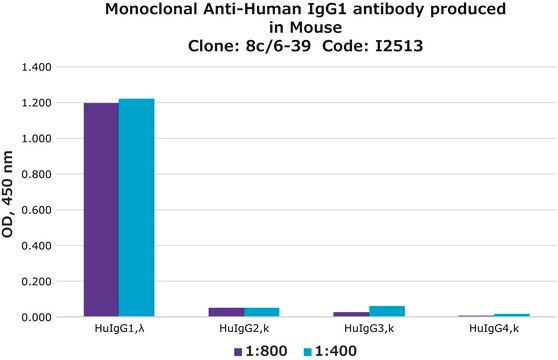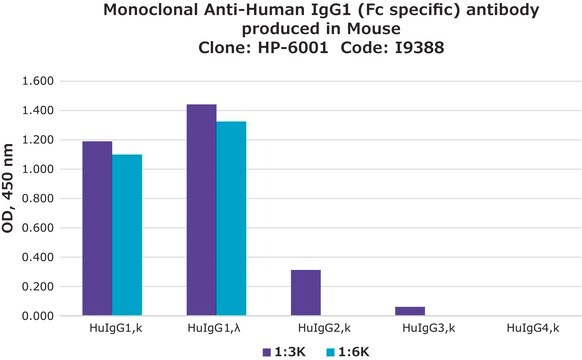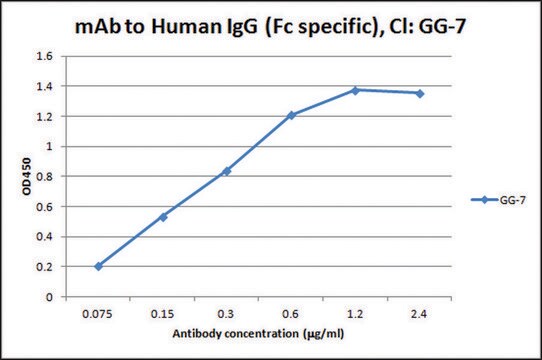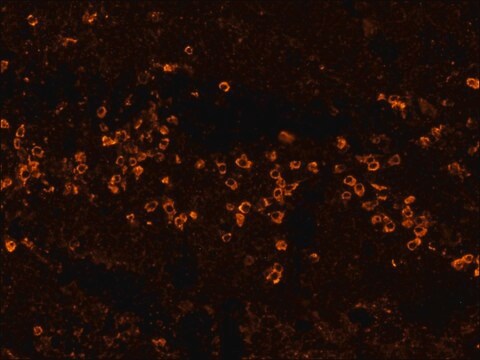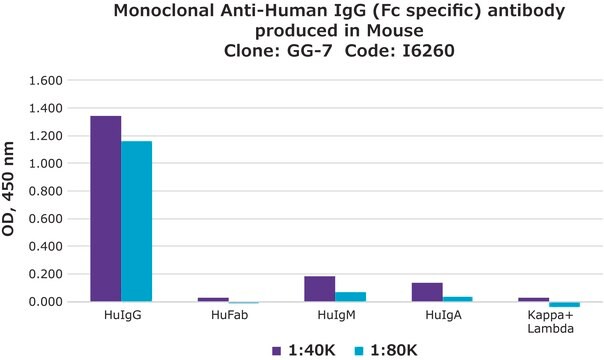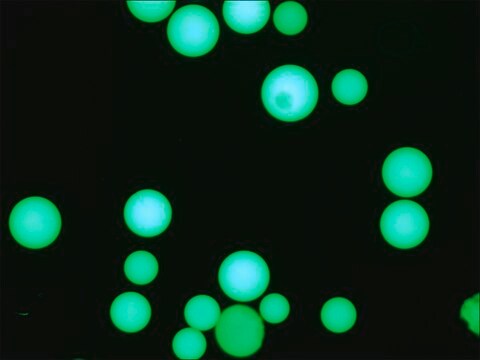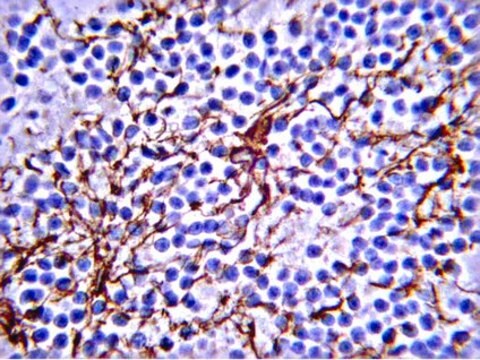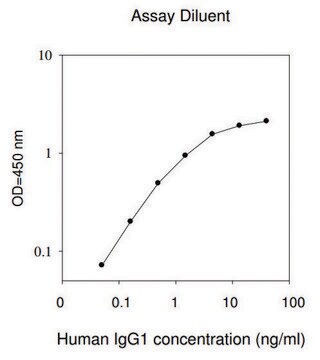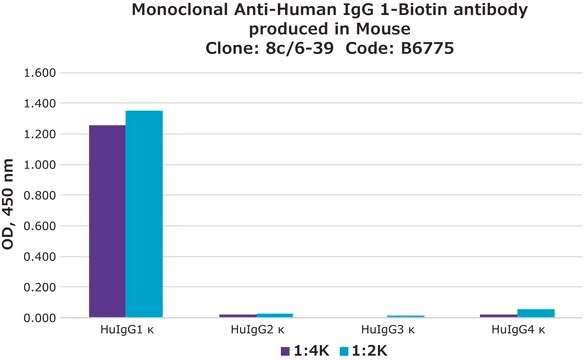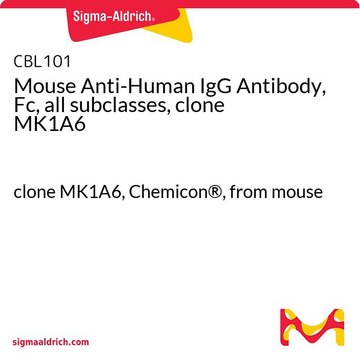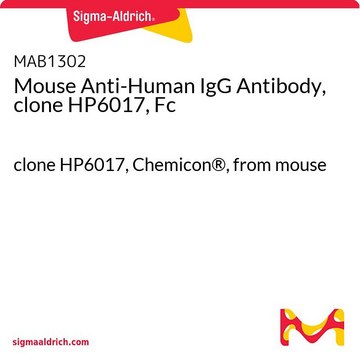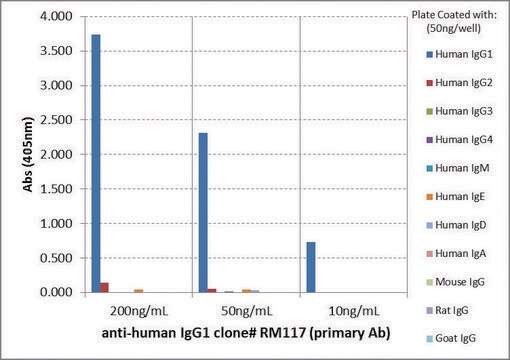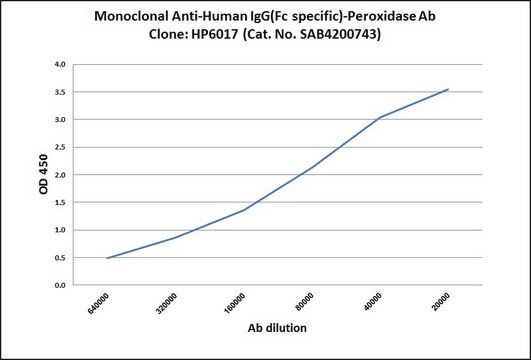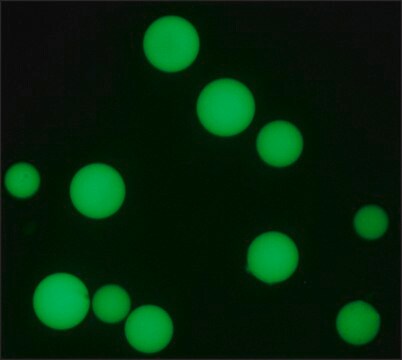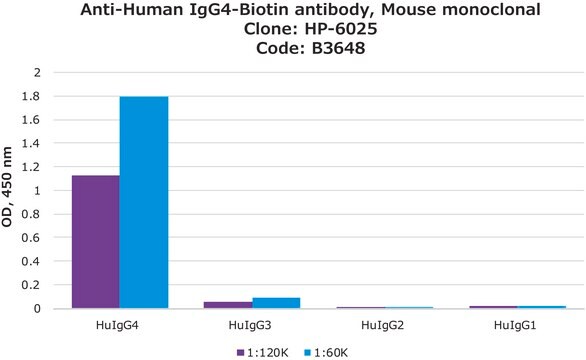SAB4200788
Anti-Human IgG1 (Fc specific) antibody, Mouse monoclonal
clone HP-6001, purified from hybridoma cell culture
Synonym(s):
Anti-Human immunoglobulin G1
About This Item
Recommended Products
biological source
mouse
Quality Level
antibody form
purified from hybridoma cell culture
antibody product type
primary antibodies
clone
HP-6001, monoclonal
form
buffered aqueous solution
species reactivity
human
concentration
~1.0 mg/mL
technique(s)
indirect ELISA: 0.5 μg/mL using 1 μg/mL Human IgG1 myeloma protein for coating.
isotype
IgG2b
shipped in
dry ice
storage temp.
−20°C
target post-translational modification
unmodified
General description
The amount of the different IgG subclasses present in the bloodstream varies with age. For example, IgG1 and IgG3 reach normal adult levels by 5-7 years of age while IgG2 and IgG4 levels raise more slowly, reaching adult levels at about 10 years of age. Serum IgG subclass deficiencies have been recorded for different patient groups. For example, a disproportionate elevation of IgG1 has been found in the cerebral spinal fluid of patients with multiple sclerosis.Examination of the distribution pattern of IgG subclasses in different types of diseases may provide insight into the immunological processes involved and may assist in the diagnosis of various disorders.
Monoclonal Anti-Human IgG1 (Fc specific) specifically recognizes Fc region of Human IgG1. The antibody shows no cross-reactivity with human IgG2, IgG3 and IgG4. This clone has been established as a useful human IgG1 specificity standard by the WHO/IUIS.
Immunogen
Application
Physical form
Other Notes
Not finding the right product?
Try our Product Selector Tool.
Storage Class Code
12 - Non Combustible Liquids
WGK
nwg
Flash Point(F)
Not applicable
Flash Point(C)
Not applicable
Choose from one of the most recent versions:
Certificates of Analysis (COA)
Don't see the Right Version?
If you require a particular version, you can look up a specific certificate by the Lot or Batch number.
Already Own This Product?
Find documentation for the products that you have recently purchased in the Document Library.
Customers Also Viewed
Our team of scientists has experience in all areas of research including Life Science, Material Science, Chemical Synthesis, Chromatography, Analytical and many others.
Contact Technical Service
